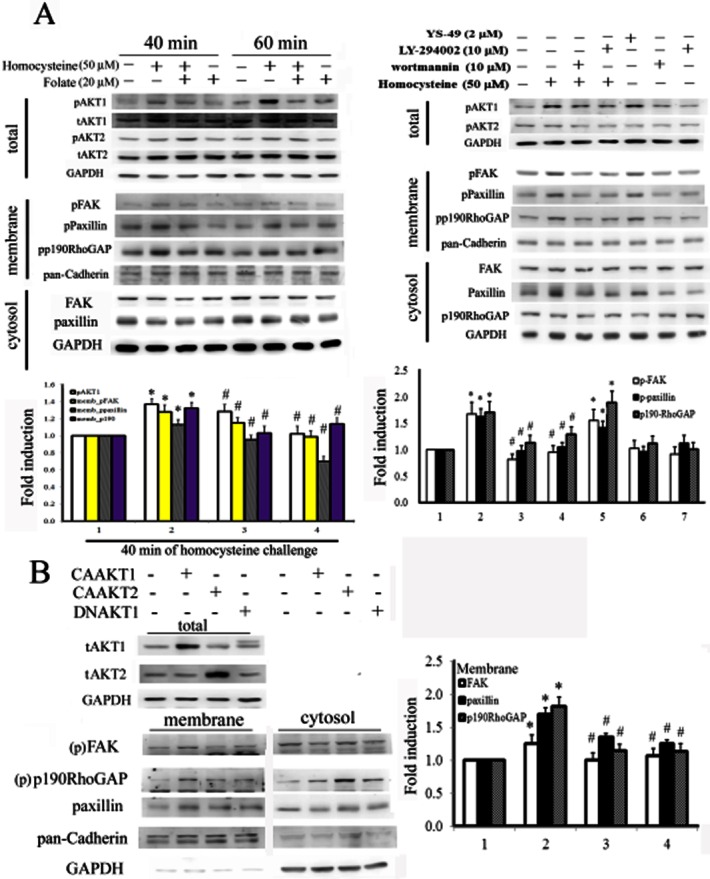Figure 3.

Folate treatment inactivated AKT1, thereby preventing homocysteine-mediated increases in phosphorylation of AKT1/FAK/paxillin/p190RhoGAP. (A) Cells were challenged with homocysteine for 30 min, followed by folate co-treatment for another 40 or 60 min. The resulting cell lysates were partitioned into nuclear and cytosolic fractions, which were probed with the indicated molecules and analysed by Western blotting. Representative results of three independent experiments are shown as the mean ± SD. *P < 0.05 vs. the control; #P < 0.05 vs. the homocysteine-challenged group. To evaluate the role of AKT activation in inducing the effect of folate, cells were pretreated with PI3K/AKT activators or inhibitors for 1 h, before challenge with homocysteine for 30 min. (B) Cells were transfected with CAAKT1, CAAKT2 or DNAKT1 (2 μg·mL−1) for 16 h. The resulting cell lysates were analysed and partitioned into cytosolic-nuclear and cytosolic-membrane fractions at the indicated time points. The activated forms of AKT1, FAK, paxillin and p190RhoGAP were analysed by Western blotting. *P < 0.05 vs. the control; #P < 0.05 vs. the CAAKT1 group.
